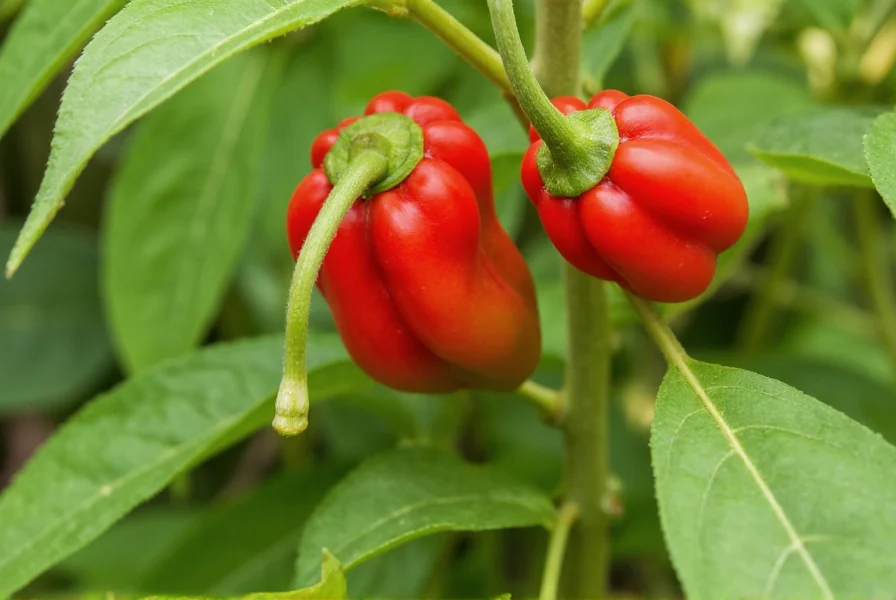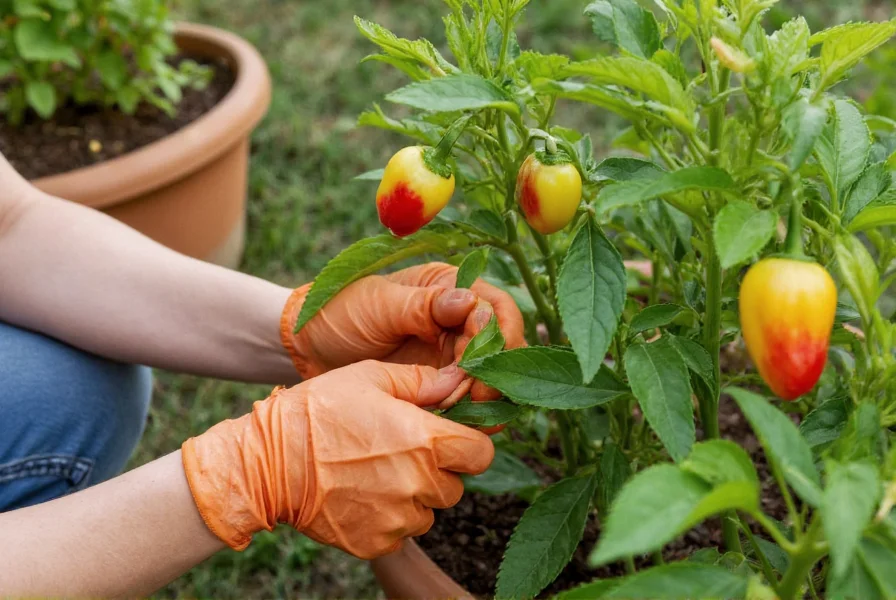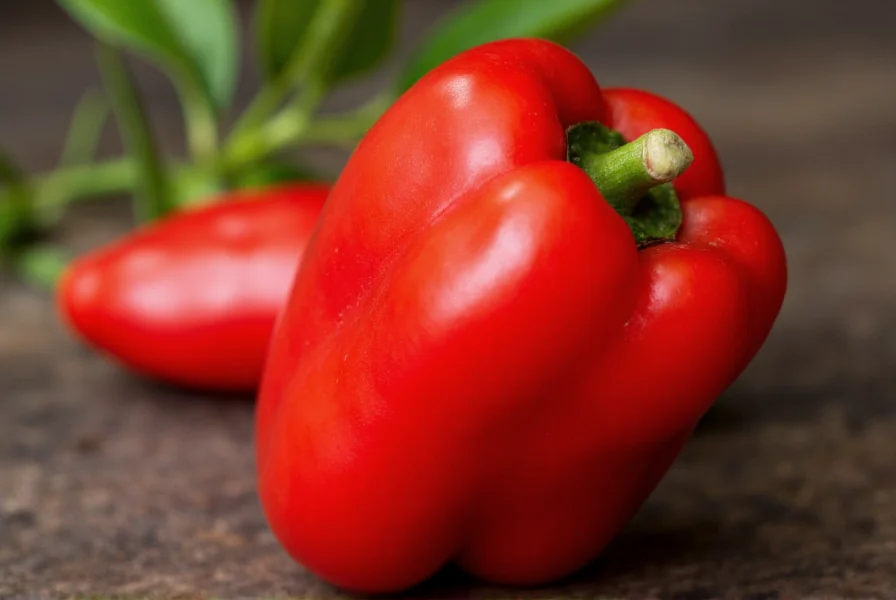Understanding the angry pepper begins with recognizing its position among the world's hottest chilies. Developed in the early 2010s by crossbreeding the Bhut Jolokia (ghost pepper) and Carolina Reaper, this cultivar consistently measures between 1.5 and 2 million Scoville Heat Units (SHU). For context, this makes it approximately 500 times hotter than a jalapeño and significantly more intense than most commercially available hot sauces.
| Pepper Variety | Scoville Range | Compared to Jalapeño |
|---|---|---|
| Angry Pepper | 1,500,000-2,000,000 SHU | 500-650x hotter |
| Carolina Reaper | 1,400,000-2,200,000 SHU | 450-700x hotter |
| Ghost Pepper | 800,000-1,041,427 SHU | 250-350x hotter |
| Habanero | 100,000-350,000 SHU | 30-100x hotter |
Physical Characteristics and Flavor Profile
Angry peppers typically grow to 2-3 inches in length with a distinctive wrinkled, bumpy texture and tapered tail. Their color transitions from green to vibrant red as they mature. Unlike some super-hots that deliver pure heat, the angry pepper offers a complex flavor profile with initial fruity notes of apricot and citrus, followed by intense heat that builds gradually.

Origin and Development
Breeding efforts focused on creating a pepper with consistent extreme heat while maintaining some of the desirable flavor characteristics found in earlier super-hots. Agricultural researchers in New Mexico selectively crossed multiple generations of Naga and Reaper varieties to stabilize the angry pepper's genetic traits. The goal was to produce a cultivar with reliable heat levels for both commercial growers and culinary enthusiasts seeking extreme heat experiences.
Safe Handling Practices
Working with angry peppers requires serious precautions due to their extreme capsaicin concentration. Always follow these safety measures when handling angry pepper:
- Wear nitrile gloves (latex provides insufficient protection)
- Use protective eyewear to prevent accidental contact
- Work in well-ventilated areas to avoid inhaling capsaicin particles
- Avoid touching your face or other body parts during preparation
- Wash all surfaces and tools thoroughly with soapy water after use
If you experience skin irritation from angry pepper contact, apply milk or a specialized capsaicin removal product rather than water, which can spread the oil. For severe reactions, seek medical attention immediately.
Culinary Applications
The angry pepper's intense heat makes it unsuitable for direct consumption but valuable as a flavor enhancer in minute quantities. Professional chefs typically use angry pepper in these applications:
- Infused oils and vinegars (1 pepper per quart of liquid)
- Specialty hot sauces requiring extreme heat levels
- Meat rubs where only trace amounts are needed
- Experimental cuisine where controlled heat is essential
When incorporating angry pepper into recipes, start with minuscule amounts—often just a few seeds or a small slice—and allow time for the heat to develop before adding more. Remember that cooking doesn't reduce capsaicin content; it merely distributes it more evenly throughout the dish.
Growing Angry Peppers at Home
Cultivating angry peppers requires specific conditions to thrive. Gardeners should note these essential growing requirements:
- Long growing season (90-120 days from transplant)
- Consistent temperatures between 70-90°F (21-32°C)
- Well-draining soil with pH 6.0-6.8
- Regular watering without waterlogging
- Full sun exposure for at least 6-8 hours daily

Due to their extreme heat, many growers choose to cultivate angry peppers in containers rather than garden beds to prevent accidental contact. Start seeds indoors 8-10 weeks before the last frost date, and transplant outdoors only after soil temperatures consistently exceed 65°F (18°C).
Angry Pepper vs Ghost Pepper: Key Differences
While both belong to the super-hot category, angry peppers differ from ghost peppers in several important ways. Angry pepper heat level typically exceeds that of standard ghost peppers by 50-100%, with more consistent heat distribution throughout the fruit. The angry pepper also features a more complex flavor profile with pronounced fruity notes before the intense heat arrives, whereas ghost peppers deliver more immediate, straightforward heat with smoky undertones.
From a cultivation perspective, angry pepper plants tend to be more robust and productive than traditional ghost pepper varieties, yielding more peppers per plant under similar growing conditions. This makes angry peppers increasingly popular among commercial growers seeking reliable production of extremely hot chilies.
Safety Considerations for Consumers
Consumers should exercise extreme caution when encountering products containing angry pepper. Many commercial hot sauces now incorporate angry pepper as their primary heat source, often without clear labeling of the extreme heat level. Look for these warning signs on products featuring angry pepper:
- "Extreme heat warning" labels
- Recommendations for protective handling
- Specific instructions for limited usage
- Age restrictions for purchase
Never consume angry pepper directly or in significant quantities. The intense capsaicin concentration can cause severe gastrointestinal distress, temporary loss of sensation, and in extreme cases, require medical intervention. Responsible producers will clearly indicate when angry pepper is used in their products and provide appropriate usage guidance.
What is the Scoville rating of angry pepper?
The angry pepper typically measures between 1.5 and 2 million Scoville Heat Units (SHU), making it approximately 500 times hotter than a standard jalapeño pepper. This places it among the world's hottest chili varieties, comparable to the Carolina Reaper but generally more consistent in heat levels.
Can you eat angry pepper raw?
Consuming angry pepper raw is strongly discouraged due to its extreme heat level. Even a small piece can cause severe mouth and throat irritation, gastrointestinal distress, and temporary loss of sensation. Culinary professionals typically use angry pepper in highly diluted forms such as infused oils or minute quantities in sauces rather than consuming it directly.
How do you grow angry peppers successfully?
Growing angry peppers requires a long growing season (90-120 days), consistent temperatures between 70-90°F, well-draining soil with pH 6.0-6.8, and full sun exposure. Start seeds indoors 8-10 weeks before last frost, use containers for safer handling, and maintain regular watering without waterlogging. Due to their extreme heat, many growers prefer container gardening to prevent accidental contact with the plants.
What's the difference between angry pepper and ghost pepper?
While both are super-hot peppers, angry pepper typically measures 1.5-2 million SHU compared to ghost pepper's 800,000-1,041,427 SHU, making it 50-100% hotter. Angry pepper offers more complex flavor with fruity notes before the heat builds, whereas ghost pepper delivers more immediate heat with smoky undertones. Angry pepper plants also tend to be more robust and productive than traditional ghost pepper varieties.
How should you handle angry pepper safely?
Always wear nitrile gloves (not latex) and protective eyewear when handling angry pepper. Work in well-ventilated areas, avoid touching your face, and wash all surfaces thoroughly with soapy water afterward. If skin contact occurs, apply milk or specialized capsaicin removal products rather than water. Never handle angry pepper near children or pets, and store it securely away from regular cooking areas.











 浙公网安备
33010002000092号
浙公网安备
33010002000092号 浙B2-20120091-4
浙B2-20120091-4